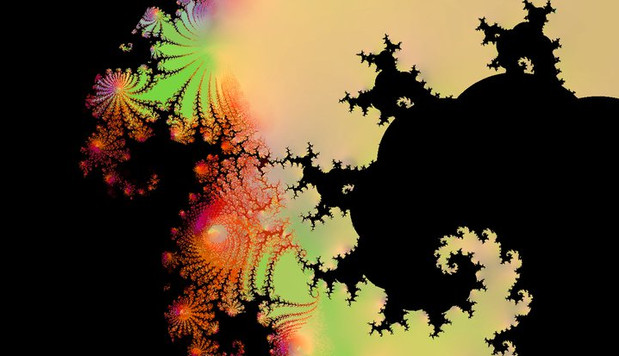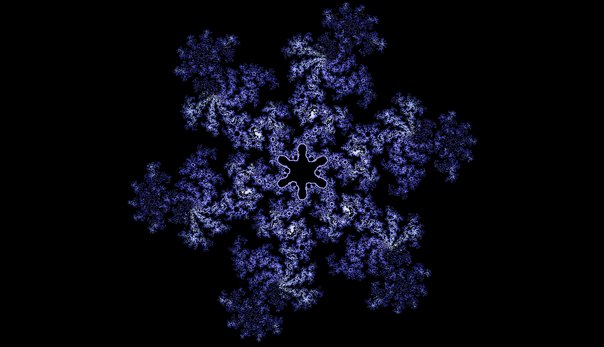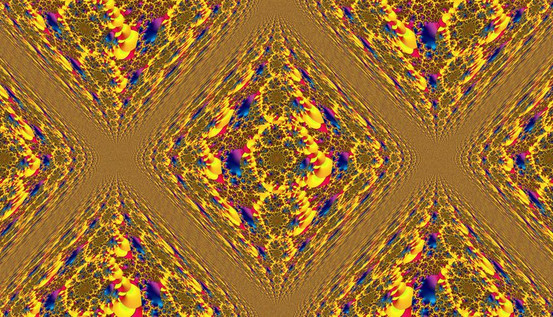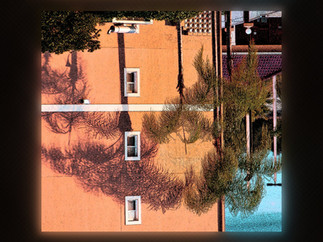ixnayokay -- an introduction
- ixnayokay

- Oct 11, 2021
- 6 min read
As I prepare to take my next step as an artist and release my work on Art Blocks, I know there will be questions: "Who is this person? What have they done? Why should I care?" In truth, I find myself asking some of these same questions about myself -- as ever, but especially now. So, let me take a stab at answering some of those things!
Who Am I?
My name is Aaron, though I've gone by a variety of handles over the year -- ixnayokay, ionvaden, cyberart.io, Chaos Window, Color Echoes, tegeturas, Apathogen, Chef -- probably others.
By day, I'm a software engineer with a degree in Computer Science / minor in Math from Virginia Tech. I live with my wife and son in the Washington D.C. metro area. I grew up in the small town of Broadway, Virginia in the Shenandoah Valley, where I spent a lot of time in the garden and in the woods, which I think has left me with a deep affinity for nature. I spent a lot of my childhood catching insects, looking up at the clouds, getting close to plants. I wanted to be a meteorologist when I grew up. From an early age I was very nearsighted, and liked to take off my glasses and look at things from an inch away to see their details, which I think is a good window into how I (very literally) see the world.
Growing up, I was always pretty focused on math, science, and writing. I never felt I had much talent for (or interest in) drawing, painting, or other kinds of visual art. Even photography was a miss for me -- I kept accidentally exposing the film, and after the third time kind of decided it wasn't for me. This started to change in college, when I borrowed a camera from a friend in my dorm and wandered around campus capturing random things. As it turns out, I loved it!
My senior year, I took a truly fantastic course called Cyber Art. Half of the students were Comp Sci majors, and half were Art/Design majors. We were put into groups together, and worked on a variety of audiovisual products marrying technical acumen with a creative eye. We circuitbent toy instruments. One group made a Jacob's Ladder (static electricity -- similar to a Tesla coil) percussion instrument out of a microwave. For one project, we used half a dozen sound systems positioned around a large, dark space playing an assortment of randomly-ordered sound clips related to the concept of "wonder" (like the Wonderball theme song -- remember those? Interview clips asking students what they wonder about. Excerpts from Alice in Wonderland).
Over the years, I've made a couple of meager attempts at selling my art, but have mostly just enjoyed the creative process. I throw it onto social media or into a folder, and mostly just forget about it. Something I'm trying to do better about.
What I've Done
untitled - Fractal Room (2009)
One of my favorite projects from the Cyber Art class was a concept I came up with -- a full-room immersive fractal experience at the P. Buckley Moss gallery in Blacksburg, VA in 2009. In a small 5 ft x 5ft triangular room (with a door on the hypotenuse), we covered one of the smaller walls in mirrors. A projector was hung outside the room, pointing into the corner of the room. A webcam was set up inside the room, pointing into the corner. The webcam feed was run into a laptop, that flipped and applied effects to the video, before projecting it back into the room -- a similar effect to pointing a live camera to its own feed.
The room was small enough for 1-2 people to step inside, and when you did, the entire room became a fractal made of you! Waving your arms would show an infinite cascade of fractal arms rippling and morphing. And the light would also be projected onto your body. Besides the captivating visuals, I was trying to make it a really personal experience for the viewer, in that little room. The art they were seeing was, in effect, made of them. They were bathed in it, surrounded by it. The chaos and beauty they were seeing was just a reflection of their own presence.
Unfortunately, I don't have photos or videos of this installation. It was before I got my first smart phone or camera.
Stumbling into Math Art (~2009)
I was sitting around with some friends one night, watching a movie (Moon) and working on a visualization for Gilbreath's conjecture. One of my friends looked over my shoulder and said, "Hey, what's that? Working on some art?" I said it was a visualization of a math problem, and he said "Oh, well it looks like art to me!" I had to think about that one. It hadn't really occurred to me that it could be art. Or that I could make art. But the idea was intriguing. Here is that visualization, showing some properties related to cellular automata.

So, I decided to explore actually trying to make art. The rest is history, now.
Fractal Art - Posters (2009 - 2011)
Over the next few years after college, living in my hometown and working part time, I had a lot of free time, not many responsibilities, a lot of youthful energy, and a lot of curiosity. This was a really prolific period for me, and I spent a lot of time exploring fractal art. My favorite exercise when learning a new programming language was to make a fractal renderer in it -- I made them in java, javascript, perl, ruby, jruby, c++, php -- all sorts of languages. Here is some of my work from this period:
I got many of these made into posters that I sold at festivals and in local shops. This was my first experience with selling art. Here are some of the posters:

"Photomods" and more fractal art (2011 - 2014)
During this period, I began experimenting heavily with making art out of photos, and refined some of my fractal techniques. My tool of choice for working with photos was Microsoft's Paint . NET, because it came with some powerful filters but was still simple enough for use by an amateur. I experimented with close-up photography to remove context and focus more on shapes and textures. I called these warped photos "photomods" -- here is a selection of them:
And here are some of my fractal works from this period:
During this time, I also experimented some with evo art, in the form of a Perl program that would output art, look at the art to see if it was good -- and if so, read its own source code into memory, mutate it, and then spawn and run copies of itself. Here are some of those experiments (some of which were touched up a bit in an editor after):
Photography (2014 - 2016)
During this phase, I moved to San Francisco and spent a few years out there. I made a lot less math art and turned my focus to photography.
I did still make a few pieces of math art / photomod:
But most of my focus was on learning to use a Nikon D810:
I haven't uploaded most of my photos to the web, but some more are available at: https://stock.adobe.com/contributor/208193298/ixnayokay
Math Animations (2017 - present)
For the past few years, I've mostly been focused on animated math art. This is harder to post, but several examples are available at cyberart.io (note -- this site is not currently maintained, so its cert has lapsed). More info about some of the animations available there and some other things I've been working on are available at aaronboyarsky.com (again, not currently maintained, so the cert has lapsed).
In Jan/Feb of 2021, I became aware that people were uploading live math art onto the blockchain as NFTs, which was way more interesting to me than breedable cat avatars (sorry, CryptoKitties, you know I love you). I started doing some research on what platforms were available to create these NFTs, and that brought me to Art Blocks. I applied to submit a piece in February, and the result -- "mono no aware" -- is about to launch this month! Very excited to explore this new medium and see how the work is received. In my next blog post, I'll be diving into some details on "mono no aware" -- stay tuned!
Thanks for reading -- Aaron









































































































































































































Comments